Understanding the lifecycle of a hailstone
Hailstones studied at NSF NCAR will enable researchers to improve forecasting and warning systems
Aug 20, 2025 - by Audrey Merket
Aug 20, 2025 - by Audrey Merket
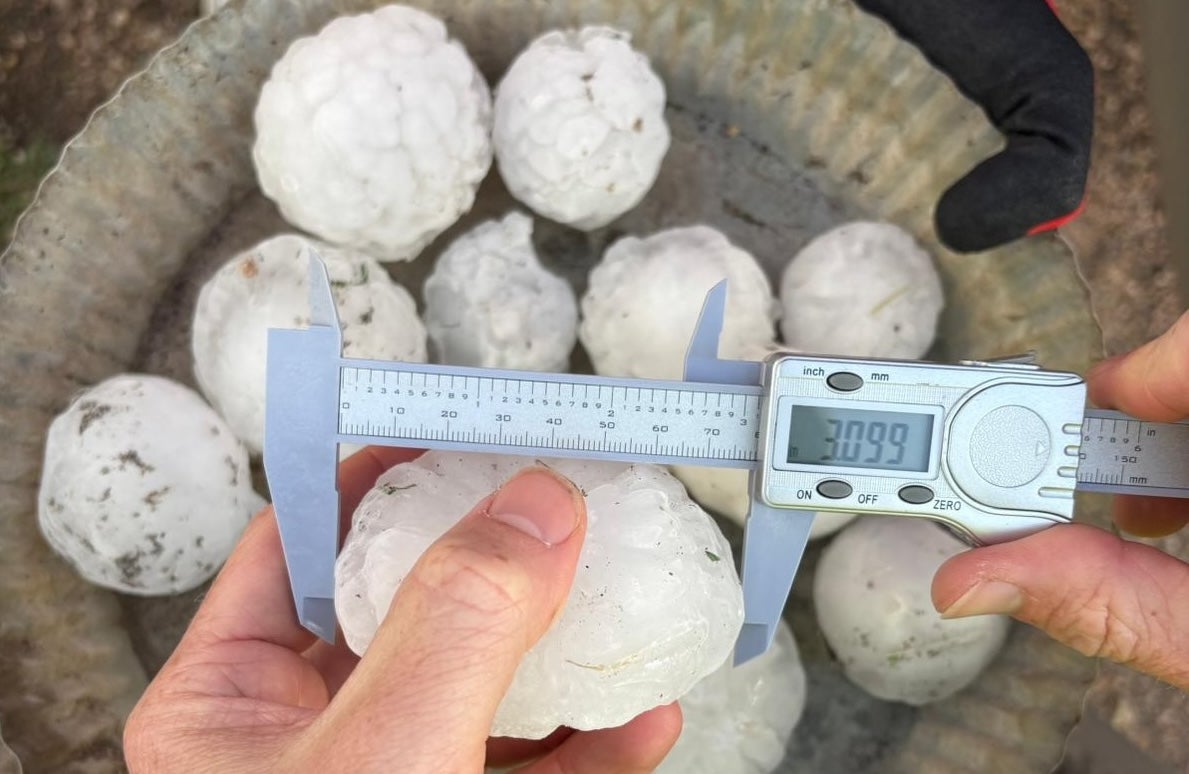
| Impact statement: The data collected from the ICECHIP campaign will be used to update weather forecasting models that could ultimately lead to earlier, more accurate alerts that aim to protect lives and property. |
For six weeks in May and June, researchers chased hailstorms across the Central Plains and the Front Range of the Rocky Mountains in pursuit of better data on how hail forms, grows, and falls in order to improve hail forecasting and early warning of impending hail.
The In-situ Collaborative Experiment for the Collection of Hail In the Plains (ICECHIP) field campaign was the first major U.S. hail field campaign in over 40 years. Over 10,000 hailstones were collected, a selection of which are now being analyzed at the U.S. National Science Foundation National Center for Atmospheric Research (NSF NCAR).
Hailstorms caused $35 billion in losses in 2024 for homeowners and industries such as aviation, agriculture, renewable energy, and transportation. The comprehensive data collected during ICECHIP will offer a long-awaited advancement in hail science that could ultimately lead to earlier, more accurate alerts that aim to protect lives and property.
“There hasn’t been a major hail field program in almost 50 years and we thought it was time to remedy that, especially since the instruments and measurements we have now are way better,” said Andy Heymsfield, NSF NCAR researcher and one of the ICECHIP principal investigators. “ICECHIP data will fill in critical gaps in hail forecasting capabilities. The models we use now for predicting hail are based on data from the 1970s that assume all hailstones are spherical ice balls, and as anyone that has seen a large hailstone knows, they rarely are.”

ICECHIP brought together 15 U.S. institutions and 4 international partners to collect as much data as possible about hailstorms. The work is funded by the U.S. National Science Foundation.

From May 15 to June 30, the ICECHIP team drove a caravan of radar trucks from the U.S. border with Mexico to the border with Canada in search of supercell storms, which are severe, isolated thunderstorms. Before a storm rolled through, researchers and students would set up their armada of instruments in what they predicted would be the major path of the storm based on radar data.
They launched weather balloons, set out experimental roofing materials, and positioned hail pads — foam pads that measure the size and distribution of hailstones from their imprints. They also used a variety of cutting-edge instruments such as a fleet of disdrometers that measured the impact at which hailstones hit. Super Mobile Hail Observatories (SuMHOs), specially designed funnels as tall as a person, collected pristine hail into a cooler before it hit the ground. Australian researchers brought HailSondes, which are sensors encased by styrofoam about the size of ping pong balls that launch into storms and, as they bounce around like hailstones, collect data about hail behavior such as melting, freezing, and how a hailstone moves around in the storm.
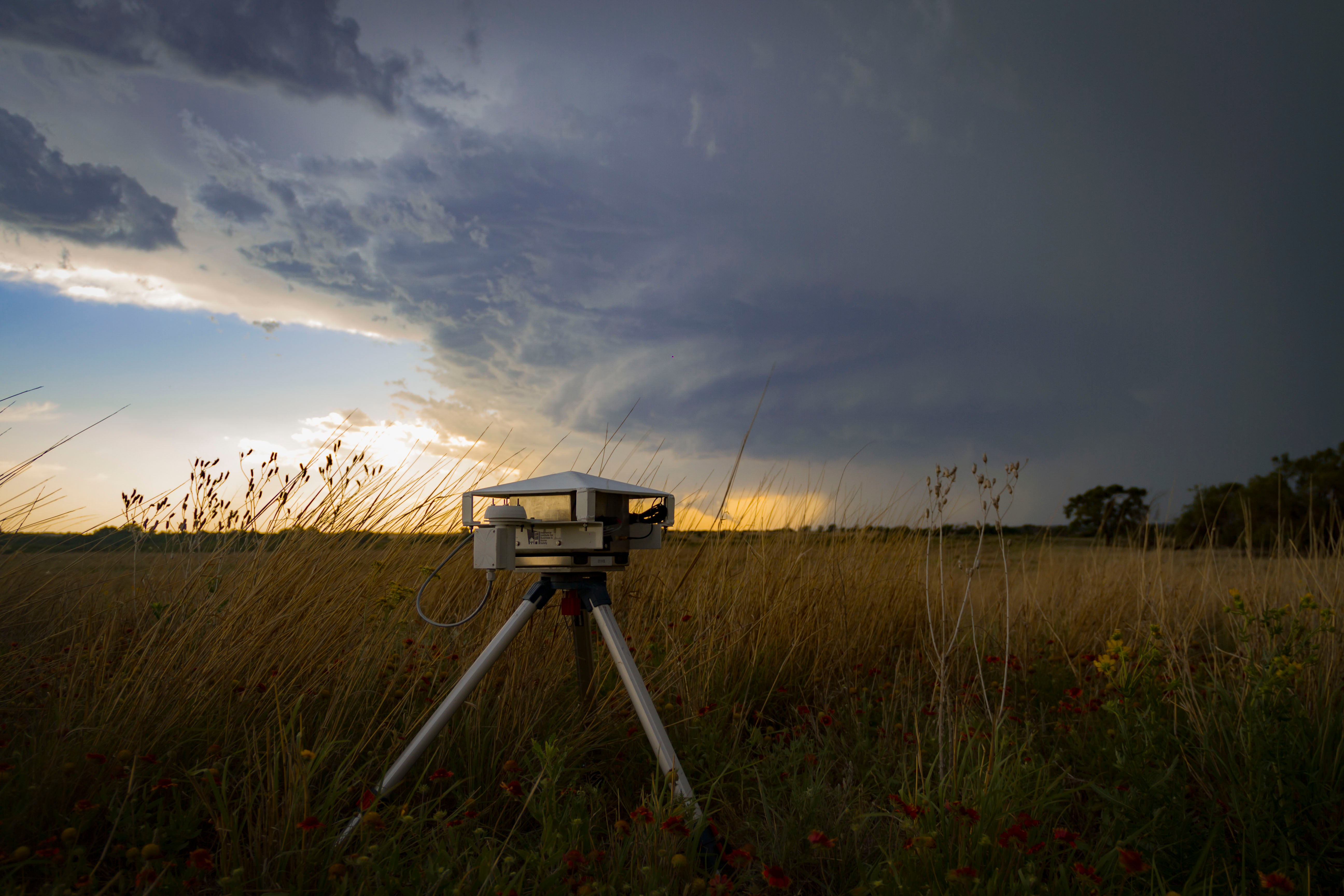
Once they set up the instruments, those researchers not in trucks fortified with mesh to protect windshields from icy projectiles would retreat beneath safer skies. As the storm moved, team members from the University of Colorado Boulder followed the supercell with a fixed-wing drone called the Robust Autonomous Airborne Vehicle - Endurant and Nimble (RAAVEN) in order to collect as much video of the hail swath as possible.
Once the storm passed and it was safe, ICECHIP members cautiously returned to retrieve instruments and collect additional lingering hailstones. Hailstones that weren’t selected for in-depth research were scanned with a portable, handheld 3D scanner and crushed with a hail crusher to measure how much force it takes to break an individual hailstone.
“The ICECHIP team put in a lot of effort and grind for this research,” said Becky Adams-Selin, a scientist at Atmospheric and Environmental Research and Lead PI of ICECHIP. “The team drove miles upon miles and spent late nights hunching over a crusher, wading through water to retrieve instruments or traveling back to their hotels. This crew has done it all and more in order to improve our knowledge of hailstorms.”
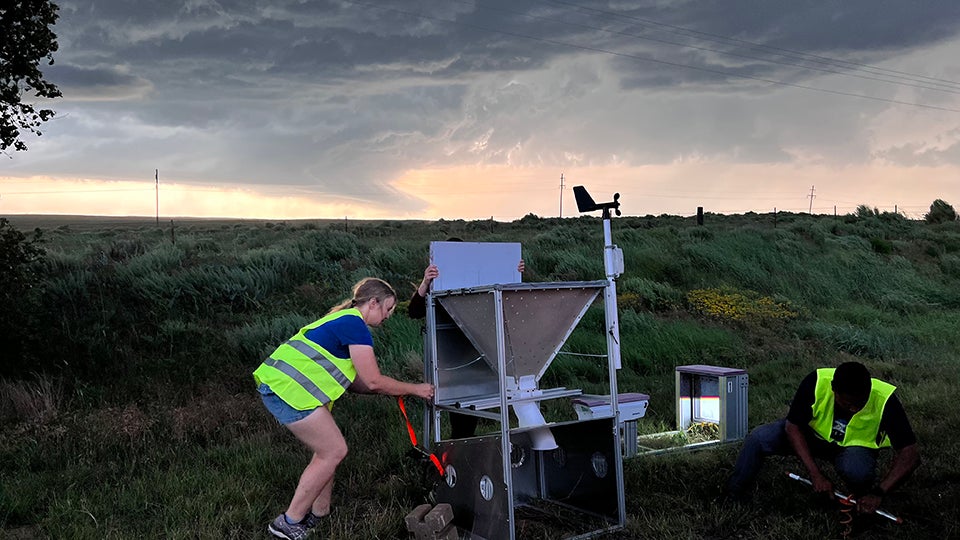
Across 24 intensive observation periods, the team of researchers and students amassed 26 cooler-sized boxes full of hailstones that are now in a cold lab at NSF NCAR. The collected stones range in size from less than a quarter of an inch (about 3 mm) to 5.5 inches (14 cm), which is larger than a softball.
“The team traveled all the way from Montana to Texas, and we got the hailstones back by any method possible,” said NSF NCAR scientist Aaron Bansemer, who oversees the cold lab. “Once a reporter based in Denver who was covering ICECHIP kindly brought back a load of styrofoam coolers filled with hailstones and dry ice.”
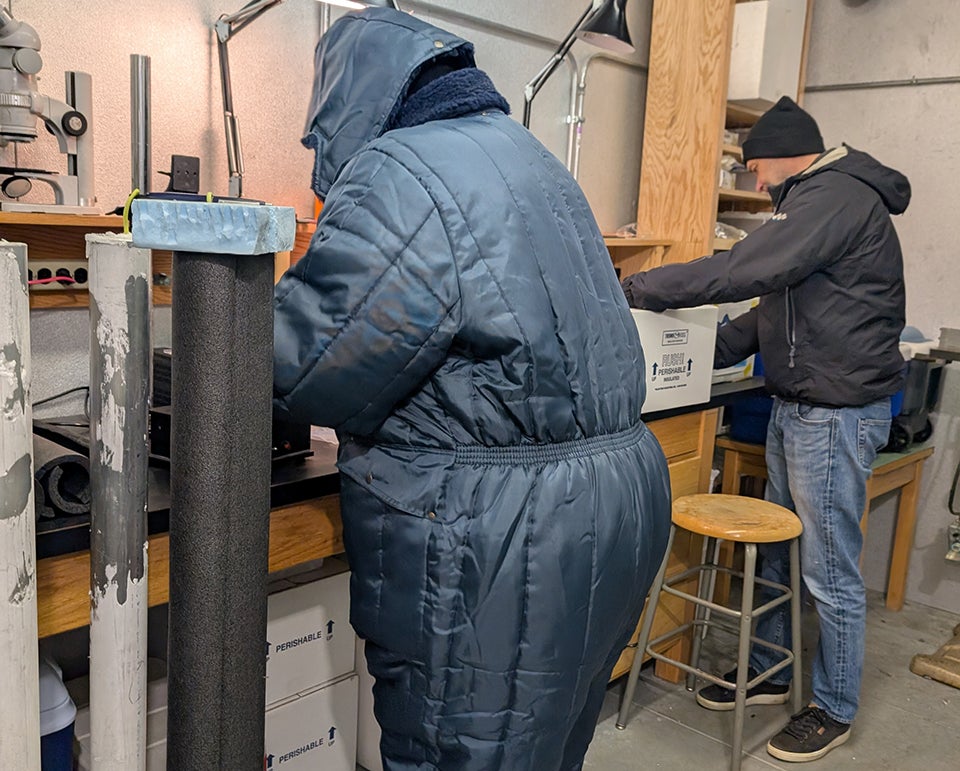
Janus Research Group Postdoctoral researcher Anthony Bernal Ayala is heading up the cataloguing and initial analysis of the hailstones. This involves donning a commercial freezer suit and then taking images of the hailstones from multiple angles and measurements for size and weight for as long as he can withstand the cold before taking a break to warm up. The lab stays around –6°Fahrenheit (about –21°Celsius) and the cold temperatures have also been an endurance challenge for some of the instruments. The cold lab staff have had to source batteries and scales that can hold up in subfreezing temperatures.
The measurements and images of each hailstone will provide the ICECHIP team with the data needed to create detailed 3D models. These digital models will be stored on computers, allowing hailstones to be studied and recreated long after the originals have melted. The models can be used in virtual simulations or converted into physical replicas through 3D printing. The printed replicas can serve as molds for freezing accurate ice copies of the hailstones, which can then be tested under real-world conditions, for example, by releasing them from a drone to study properties such as drag, tumbling behavior, and melting rates during free fall.
Once every stone has been catalogued, Bernal Ayala and other ICECHIP team members will study their isotopic composition by slicing the stones with a bandsaw. The thin slices can then be studied with a cross-polarization apparatus, a set of optical filters that looks similar to a magnifying glass and uses light to help researchers see the crystalline structure of the hailstones. The layers can tell researchers whether growth occurred in wet or dry conditions, with cloudy layers forming in really cold temperatures and clear layers forming in warmer conditions similar to freezing rain.
“A hailstone is kind of like its own lab; it's a chronicle of time that will save its information within its crystalline structure,” said Bernal Ayala. “Hailstones have layers of growth that look similar to tree rings, and they can reveal a lot of things about the conditions inside the cloud when it formed.”
The cataloguing and documentation taking place at NSF NCAR will lead to the most extensive database yet of hailstones. Linking the small-scale details contained within the hailstones with the large-scale observations collected in the field will give researchers and forecasters a vast amount of information about the lifecycle of a hailstone.
“All of the data will be like a composition,” said Bernal Ayala. “A note by itself is not much, but when you combine it with the whole composition, you make music. Combining all of the information from the hailstone with the environmental conditions will help us understand why these hailstones form, grow, and fall the way they do.”
Meanwhile, researchers are already combing through the data collected from the instruments and proposing research questions they hope to answer when the individual hailstone data can be combined with the larger picture. Ultimately, many on the ICECHIP team are optimistic that their efforts will improve radar-based hail detection, models, forecasts, and ultimately warnings.
“This dataset is going to be studied for years and will advance hail science forward by leaps and bounds,” said Adams-Selin. “I look forward to the day when we will laugh at how rudimentary our hail forecasting techniques were for this campaign.”
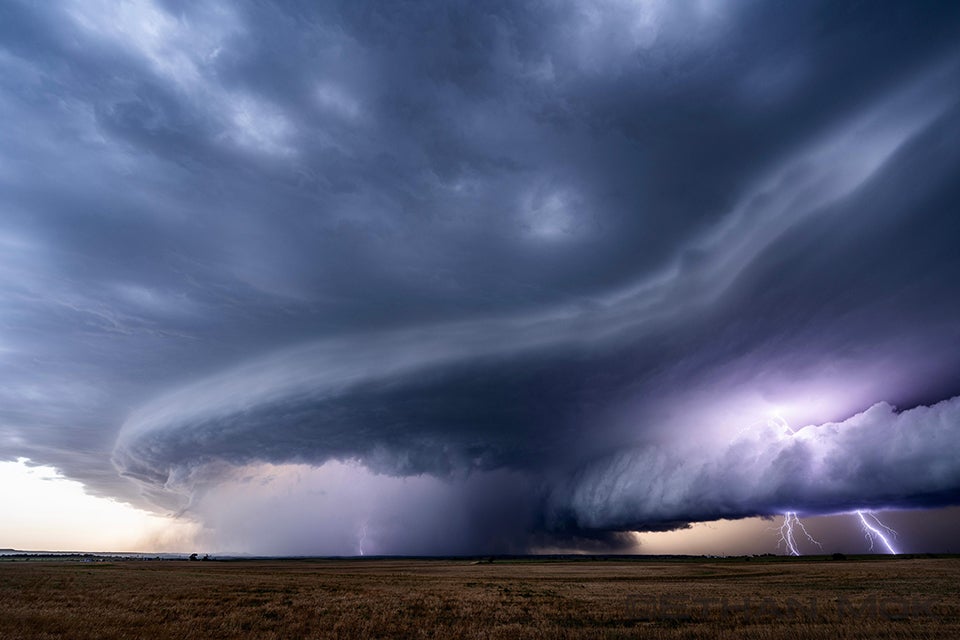
To view more ICECHIP photos, visit the NSF NCAR & UCAR ICECHIP image gallery